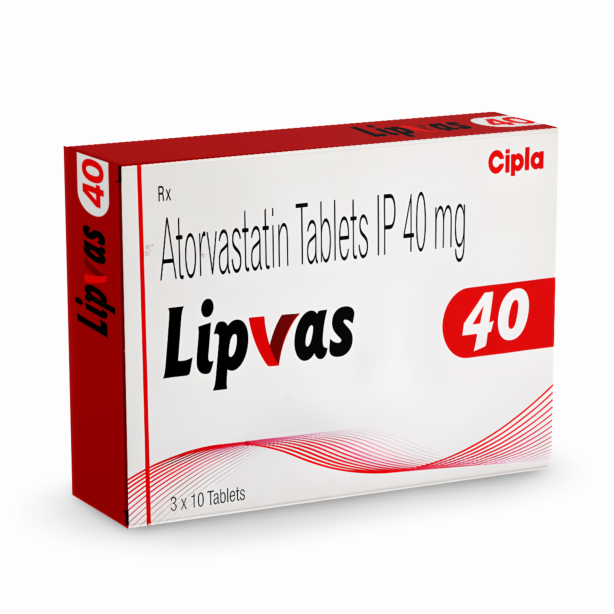Cardiovascular Disease (CVD) is the world’s most significant cause of death, accounting for over 18 million lives lost each year. Despite significant medical improvements, the prevalence of heart attacks, strokes, and associated illnesses continues to rise, often silently. But why are some people at greater risk than others?
The answer lies in a complicated network of risk factors, some of which we inherit and others that we generate by everyday choices. Understanding these Cardiovascular Disease risk factors is the first and most important step toward maintaining your heart health.
From lifestyle habits like smoking and diet to medical conditions such as Hypertension and Diabetes, these contributors often work together to accelerate damage to the cardiovascular system. But the good news is that many of these risks may be reduced, treated, or even eliminated by increased knowledge, proactive decisions, and prompt actions.
This article will explore all the major risk factors for Cardiovascular Disease and ways to prevent them.
Common Cardiovascular Disease risk factors
Risk factors linked with Cardiovascular Disease (CVD) are usually classified as modifiable (those that can be changed or controlled) and non-modifiable (uncontrolled or those that cannot be changed). Let’s discuss these modifiable and non-modifiable risk factors for Cardiovascular Disease in detail.
Save up to 90% on your medicine bills

Eliquis 2.5 Mg

Crestor 40 Mg

Lipvas 40 mg

Arkamin 100 Mcg
Modifiable risk factors
Certain health problems and lifestyle factors are modifiable risk factors of CVD that can be managed through lifestyle changes, medical interventions, or both.
Health problems
Medical conditions that increase the risk of CVD include:
- High Blood Pressure (Hypertension): High Blood Pressure is one of the leading causes of CVD. Hypertension, sometimes known as the silent killer, as it rarely causes symptoms, puts a constant strain on the arteries and heart. Over time, this pressure weakens blood vessel walls, promotes plaque formation (Atherosclerosis), and raises the risk of heart attack, stroke, and kidney disease. Even slightly elevated blood pressure can cause long-term cardiovascular harm.
- High Cholesterol: High cholesterol, particularly increased LDL (bad cholesterol), is a major risk factor for CVD. It causes plaque formation in the arteries, narrowing them and limiting blood flow, which can lead to heart attacks or strokes.
- Diabetes: Diabetes significantly raises the risk of CVD because elevated blood sugar levels harm blood arteries and nerves that drive the heart. Diabetes can boost the chances of getting heart disease or stroke by up to four times.
- Obesity: Obesity raises the likelihood of CVD by causing High Blood Pressure, cholesterol, insulin resistance, and inflammation. Excess body fat, particularly around the abdomen, gives additional strain to the heart and promotes the formation of plaque in arteries, resulting in conditions such as heart attack and stroke. As per a review published by the Journal of the American Heart Association in 2021, Obesity can directly lead to CVD if not addressed in a timely manner.
Lifestyle factors
Lifestyle choices that increase CVD risk are:
- Smoking: Tobacco smoking is one of the most common and avoidable causes of Cardiovascular Disease. Nicotine raises heart rate and blood pressure, while other chemicals in tobacco smoke harm blood vessels, promoting clot formation and plaque accumulation, leading to heart attack and stroke. As per an article published by the Journal of Thoracic Disease in 2020, smoking not only leads to CVD, it also increases the risk of getting stroke and Myocardial Infarction (A blockage in the circulation to the heart muscle).
- Unhealthy diet: An unhealthy diet contributes significantly to CVD by directly influencing multiple significant risk factors, such as Hypertension, High Cholesterol, Obesity, and Type 2 Diabetes. Diets heavy in saturated fats, trans fats, refined carbohydrates, and salt cause plaque accumulation in the arteries, resulting in Atherosclerosis, a disease that restricts blood supply and enhances the risk of heart attack and stroke.
- Physical inactivity: An inactive lifestyle is a significant risk factor. A lack of regular exercise raises the risk of being overweight and developing Hypertension, High Cholesterol, and Diabetes, all of which can cause Cardiovascular Diseases.
- Stress: Stress contributes significantly to the development and progression of CVD. Chronic stress causes physiological reactions, including increased heart rate and blood pressure, and the generation of hormones, including cortisol and adrenaline, which can damage blood vessels over time. It also causes inflammation and leads to the formation of arterial plaque, raising the risk of heart attack and stroke. Furthermore, stress frequently leads to unhealthy coping habits such as smoking, overeating, insufficient sleep, and physical inactivity, all of which increase cardiovascular risk.
- Alcohol: Excessive alcohol consumption can elevate blood pressure and triglyceride levels, weaken the heart muscle, and cause an irregular heartbeat (Atrial Fibrillation), all of which increase CVD risk.
Non-modifiable risk factors
These factors are inherent and cannot be altered. Age, sex, family history or genetics, and ethnicity are the major uncontrollable risk factors for Cardiovascular Disease.
- Age: The risk of CVD rises considerably with age. As people age, their arteries harden and constrict, and the heart muscle weakens or thickens. The majority of people who die from CVD are 65 or older.
- Sex: Men are more likely than women to develop cardiac disease at an early age. However, after Menopause, women’s risk rises and finally becomes similar to that of men.
- Family history: A family history of early Cardiovascular Disease (before the age of 55 in males and 65 in women) raises individual risk. While there is no single gene responsible, a number of inherited genes can expose people to risk factors, including Hypertension or High Cholesterol. Certain inherited illnesses, such as Cardiomyopathies (heart muscle diseases), Arrhythmias (irregular heartbeats), and Familial Hypercholesterolemia (extremely High Cholesterol levels), significantly increase CVD risk.
- Ethnicity: Certain ethnic groups face a disproportionately high risk of CVD. People of South Asian, Black African, or African Caribbean origin in the United Kingdom, as well as Black people in the United States, have a greater incidence of illnesses such as severe Hypertension and Type 2 Diabetes, all of which are major CVD risk factors.
Preventing CVD risk factors
The risk of getting CVD can be effectively minimized by adopting the following measures:
- Have a heart-healthy diet, low in saturated fats, salt, and added sugars.
- Exercise regularly for at least 150 minutes per week.
- Maintain a healthy weight.
- Avoid smoking and limit alcohol intake.
- Manage stress effectively.
- Check and control blood pressure, cholesterol, and blood sugar.
- Get regular health check-ups.
- Take medications as prescribed.
- Get adequate sleep of at least 7–9 hours per night.
- Keep yourself informed and proactive about your heart health.
Conclusion
Cardiovascular Disease (CVD) remains a major worldwide health problem, but recognizing its risk factors provides an effective way of prevention. While non-modifiable Cardiovascular Disease risk factors, such as age, gender, genetics, and ethnicity, cannot be changed, modifiable factors such as Hypertension, High Cholesterol, smoking, poor diet, physical inactivity, Obesity, and stress can be effectively managed with lifestyle changes and medical intervention.
Early diagnosis of at-risk individuals, as well as frequent health monitoring and public awareness, are necessary to reduce the probability of developing heart problems. Individuals can greatly lower their cardiovascular risk by making proactive changes such as eating healthier, being well-informed and getting prompt medical treatment.

Frequently Asked Questions
Does fish oil prevent Cardiovascular Disease?
Yes. Fish oil with omega-3 fatty acids can help decreasing triglycerides, lower inflammation, and slightly decrease blood pressure. However, evidence of its effectiveness in preventing Cardiovascular Disease is mixed, with benefits more pronounced in high-risk individuals.
Can oral health affect Cardiovascular Disease risk?
Yes, poor oral health and gum disease increase systemic inflammation, possibly contributing to atherosclerosis. Bacteria from the mouth can travel through the bloodstream, affecting heart valves and vessels and raising Cardiovascular Disease risk.
Do autoimmune diseases increase CVD risk?
Yes, chronic inflammation from autoimmune diseases like lupus or Rheumatoid Arthritis damages blood vessels over time, enhancing the risk of Atherosclerosis and heart attacks, even in younger individuals.
Can Chronic Kidney Disease (CKD) affect heart health?
Yes, CKD leads to fluid overload, high blood pressure, calcium imbalances, accelerated arterial stiffening, and heart disease. Cardiovascular Disease is the primary cause of death in CKD patients.
When referencing outside resources, GoodrxMedicine always provides full citations. To learn more about the measures we use to maintain the quality of our content, please review our Content Information Policy.











